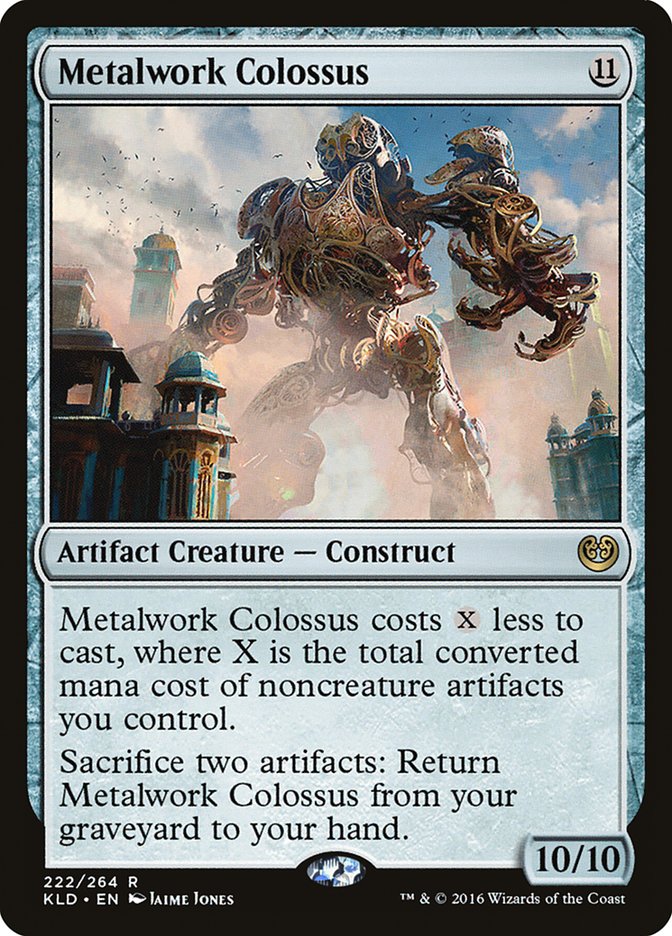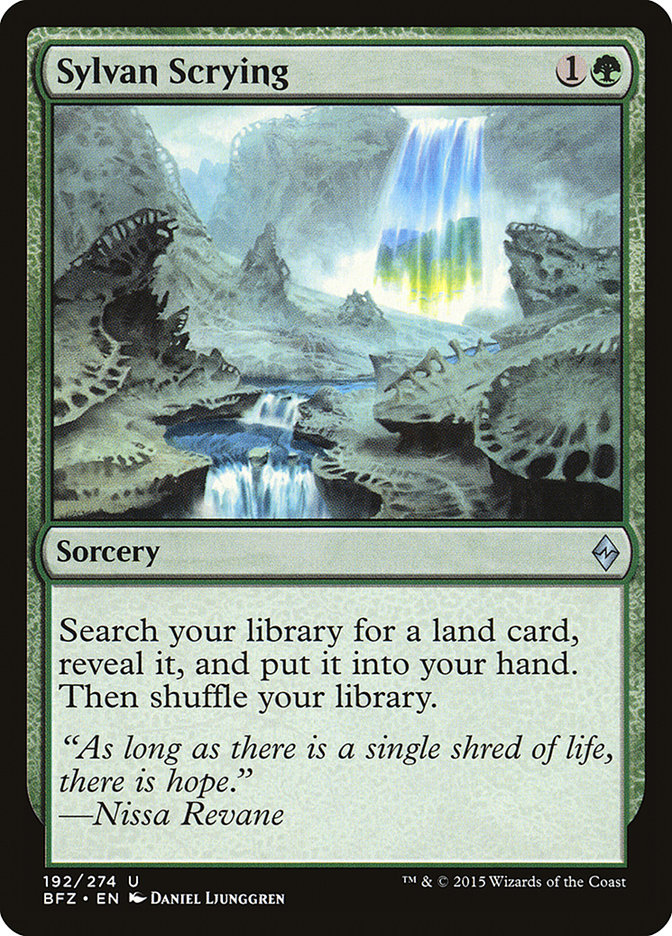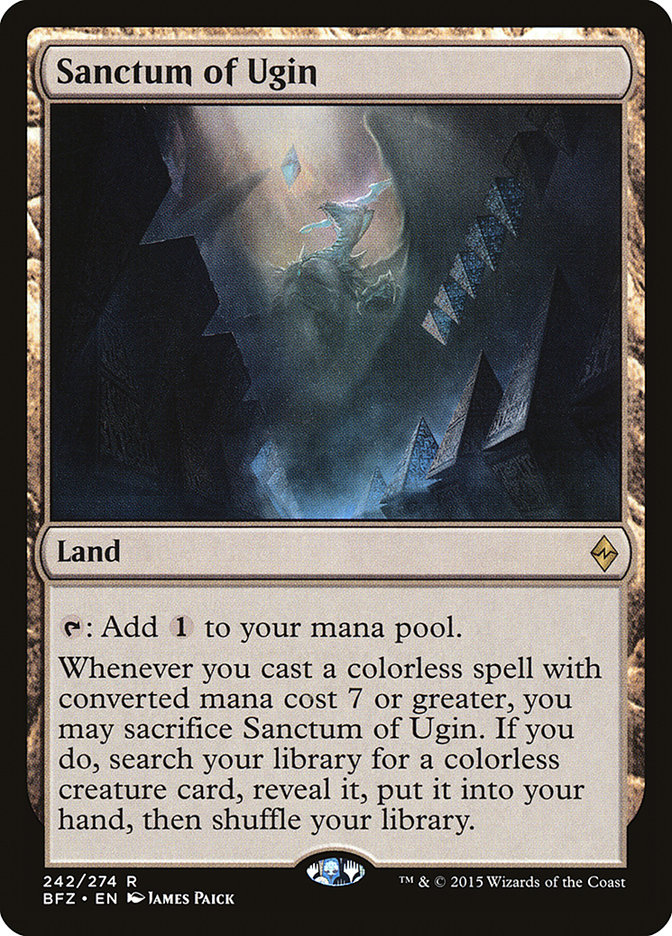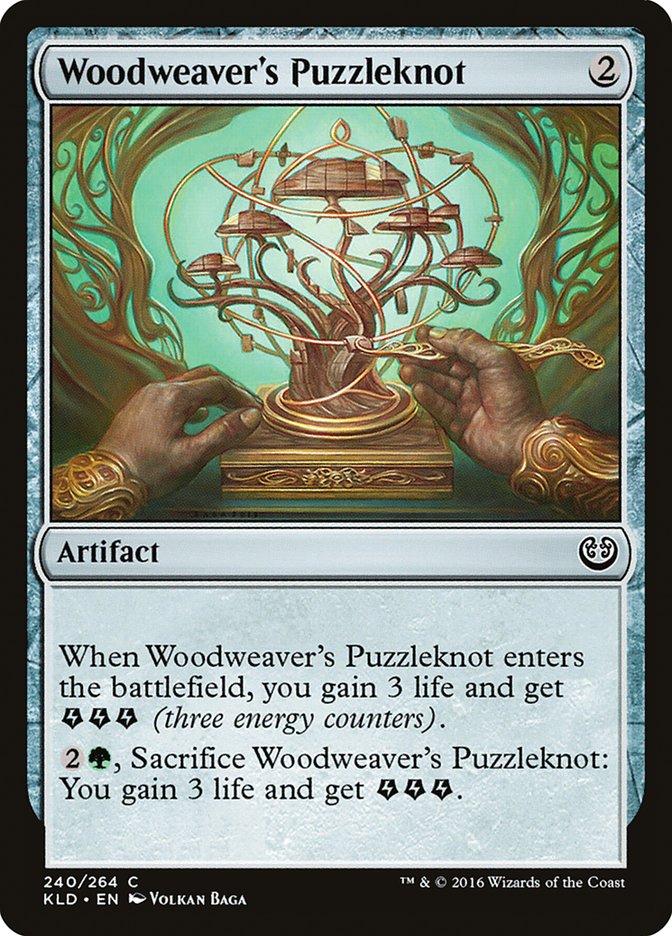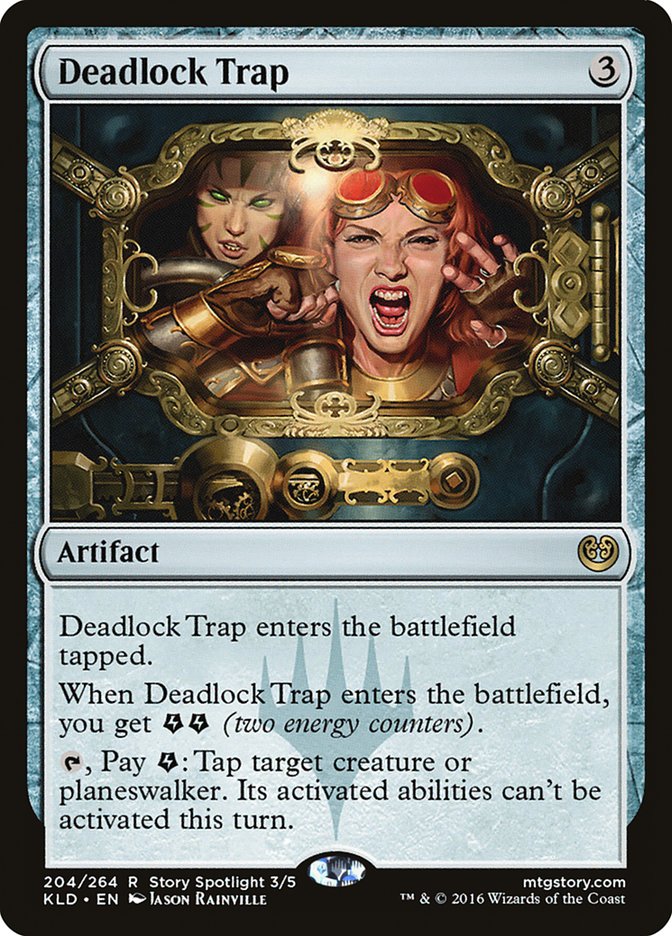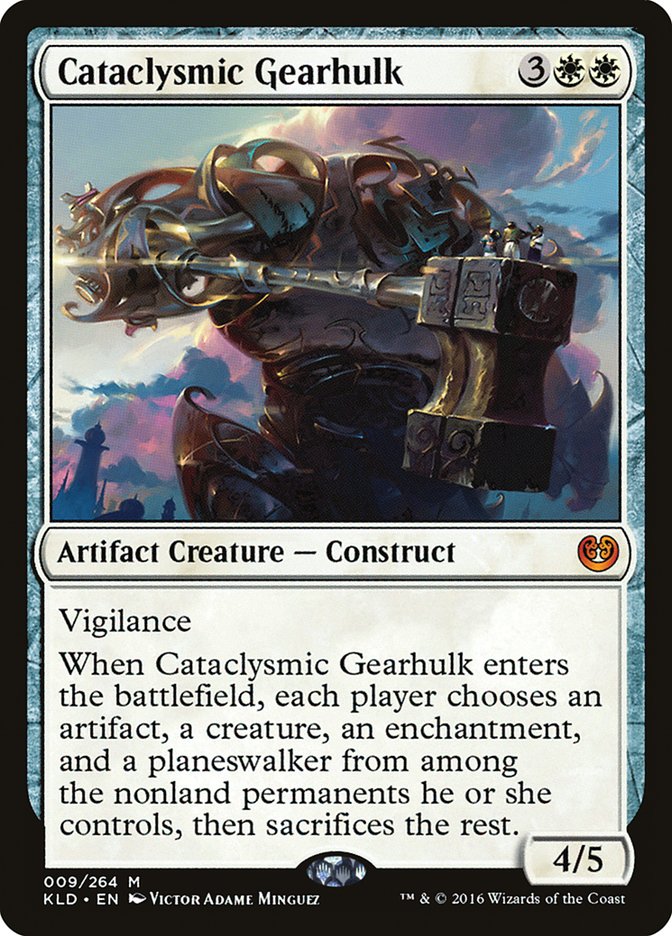Team Eureka’s exploration through the Kaladesh Standard format was certainly interesting. We had a fairly good handle of the decks that ended up showing up to the Pro Tour, but our predictions of the metagame were way off. Aetherworks Marvel taking up a 17% share of the tournament was nowhere close to what we expected.
Instead, our R/B Aggro and various Gideon-based midrange decks were overperforming, which led us to believe, ironically, that playing reactively with control decks was not a viable strategy.
With the prevalence of Smuggler’s Copter and the backbreaking nature of Gideon, Ally of Zendikar on the play, trying to get your removal spells and various interaction to line up properly against these two very different types of threats while trying to gain traction with a tool like Torrential Gearhulk seemed difficult or impossible to achieve.
Of course, the finals of the Pro Tour featured a control mirror, making this logic look a bit silly, but how was it that players like Shota and Carlos succeeded? If almost a fifth of the tournament was interested in a degenerate strategy based around a single card, then countermagic looks a lot better. In particular, Ceremonious Rejection was a huge feature of many decks – including it being splashed in various types of aggressive shells. Having a one-mana interactive spell with a wide range of applications is certainly a huge boon to control strategies.
I was actually interested in Aetherworks Marvel as well for the majority of our testing process. It turns out that the “jam all eight big things into my deck and pray” strategy was actually fairly effective for many players, but it wasn’t something that I was interested in doing. Having opening hands with various Eldrazi Titans is disheartening, but when every one of your draw steps is a sweat of being a mulligan in addition to your reliance on Aetherworks Marvel itself, it felt like your fail rate was just too high.
We tried various ways to mitigate this issue including the use of cards like Whirler Virtuoso to give another Energy sink, but it simply wasn’t powerful enough against the entire spectrum of Standard, despite being fairly effective at giving the deck ability to play a fair game.
The deck many of us ended up playing, “six-color” Metalwork Colossus, actually began as a Marvel deck. When we started to see various results in Magic Online Leagues for Metalwork Colossus, I took about trying to jam the two strategies together – Colossus is of course a good card to draw naturally in the deck and Aetherworks Marvel should theoretically keep providing the deck action. The fact that it is a four-mana artifact that stays on the battlefield is also very much appreciated. It looked a bit something like this in its first real iteration:
Creatures (10)
Lands (23)
Spells (27)

To be completely honest, I actually like this deck much more than the one I ultimately played in the tournament from a design perspective.
Aetherworks Marvel is just incredibly cool in this deck, giving it a powerful “B” plan of accruing resources every turn and grinding an opponent away with Colossus. In fact, this deck is much better at playing a long game that utilizes the Colossus recursion ability. Even sacrificing your artifacts builds up additional Energy that provides more activations!
This deck is also quite explosive. The upper ceiling of your draws can include two or three Colossuses on the battlefield by turn 4. Any combination where you can activate Marvel on turn 4 and find another artifact to enable the eleven-mana Colossus can get downright silly.
There are issues, of course. Your consistency is still in question, just like a traditional Marvel deck, despite that you lean more heavily towards Metalwork Colossus. You have several Energy generation cards in your deck that still do very little if you never find the legendary artifact – and that very fact can be a nuisance when you’re playing a creature that has interest in trying to generate as much battlefield presence as possible.
Making the discovery of Sylvan Scrying is when the deck moved away from being a hybrid strategy and instead to an all-in combo deck.
Sylvan Scrying is an incredibly clean solution to the deck’s troubles with consistency. The absolute best draws are when the deck can luckily draw several copies of Sanctum of Ugin as it turns your “put ten power on the battlefield on turn 5” draws into twenty, 30, or some variation with Elder Deep-Fiend backup. There is a huge difference in the power level of the deck when it draws several Sanctums, and many copies makes the deck feel unbeatable.
Not only does Scrying search for the land, but it can even do it with unintuitive timing that just happens to work the way the strategy plays out. I pitched the deck to the team as a “turn 5 combo deck” that scales strangely in sense of traditional Magic strategies. A Prophetic Prism on turn 5 may actually be effectively worth four or six mana, so when you already have nine mana worth of artifacts on the battlefield when untapping for your fifth turn, fitting a Sylvan Scrying into your combo turn is free. Similarly, Hedron Archive when paired with Prophetic Prism gives the deck another opportunity to fire off the sorcery.
Sylvan Scrying enables your explosive draws while also jump starting your deck. Inventors’ Fair is outrageously powerful in this deck, not only for its ability to gain some incidental life but to find your Metalwork Colossus should you never draw one. As a result, it is basically the ultimate enabler for giving the deck a failsafe for both of its real issues.
Here’s the deck we registered:
Creatures (9)
Lands (23)
Spells (28)

What probably appears strange at first glance is the inclusion of Woodweaver’s Puzzleknot without any real use for Energy other than Deadlock Trap. It probably makes more sense to acknowledge the latter first. There is a huge hole in the curve in this deck with Cultivator’s Caravan being the only real knockout three-mana inclusion. It is critically important to “curve out” in this deck and you need a critical mass of your engine to function properly and consistently.
Deadlock Trap fits the bill for not only being a literal three-mana artifact but also providing much-needed interaction. The card can buy a ton of time not only against decks that utilize large singular threats but also planeswalkers. It can easily gain upwards of fifteen to twenty life in a game that it is played on the third turn.
With this in mind, Woodweaver’s Puzzleknot makes a little more sense, but you also have to remember how aggressively slanted we perceived the Pro Tour to be. Gaining three life while building your artifact count can be effectively a Time Walk, and when you’re doing your best to generate an insurmountable battlefield position on the fifth turn while using the majority of your resources, there’s nothing wrong with “burning a card.”
Two other major highlights from the maindeck include Hanweir Battlements and Select for Inspection. I included the Battlements originally as a strong bullet for Sylvan Scrying. In reality, I don’t think anyone on the team ever actually tutored for the card, but it was a strong incidental draw for all of us, and the deck is so light on mana requirements and heavy on mana fixing that it is effectively “free.”
Select for Inspection was another card that showed up out of nowhere from Joel Larsson and Thomas Hendricks. Colossus often has issues bleeding mana on specific turns. Like I mentioned with Deadlock Trap, playing something on the third turn is critically important and there are many draws where you will be forced to play another two-mana artifact on the third turn, giving yourself the opportunity to rebuild some tempo with the Select for Inspection.
Cultivator’s Caravan, of course, also curves naturally with the card. This isn’t even taking into account some odd scenarios that can come up, like planning a game around bouncing your own Elder Deep-Fiend to force through lethal damage.
The sideboard is another cool part of the deck, earning it its “six-color” nickname.
Unfortunately, most of it is theory, as we started to run out of time just putting together a cohesive maindeck, but many of the components that were ultimately untested turned out to be quite strong. Consulate Surveillance, a proposed solution to the Electrostatic Pummeler deck, actually ended up in my deck against R/B Aggro and G/B Aggressive Delirium to great effect.
Here’s a quick sideboard guide:
R/B Aggro
Out:
In:
R/W
Out:
In:
Control Decks
Out:
In:
You’ll likely notice a few consistent trends. The first is the removal of Select for Inspection in every matchup, which might encourage the logical thought, “Why play the card in the maindeck if you sideboard it out every time?” The reason for this is that Colossus is a combo deck reliant on an engine. It needs to draw a critical mass of those engine pieces to function properly, and when you are trying to sideboard in high-impact spells, it is important that you are still able to draw a proper mix of your sideboard cards and the cards that actually make your deck work.
Another trend is that we were heavily prepared for aggressive strategies but don’t have many effective tools against midrange, control, or other decks that might be interested in loading up on interaction against us. This, of course, proved problematic with the way that the Pro Tour metagame shaped up, as I talked about at the beginning of the article.
The real issue, however, is that the deck doesn’t have a ton of access to good sideboard strategies. Consulate Surveillance ended up being largely a winner, but again, with the presence of Aetherworks Marvel and the unanimous inclusion of powerful interaction like Ceremonious Rejection, Fragmentize, and even my unfortunate run-in with Cataclysmic Gearhulk, post-sideboard games are much harder to win with this deck.
Moving forward, it is difficult to say if Colossus will be a contender. It largely will have to do with the presence of Aetherworks Marvel and the degree that folks are willing to prepare for the deck. If the metagame becomes significantly slower and we revert to an older time in which people are jockeying for long games where card advantage is a factor, then Metalwork Colossus is a powerful deck for presenting large and resilient threats that aren’t vulnerable to much of the commonly played Game 1 interaction.
If Rejections and Fragmentizes become suddenly less popular and we revert to a world where Ruinous Path is good, then I think Colossus is an excellent and fun choice. It plays out very much like a combo deck that rewards proper sequencing to maximize your explosiveness.
The Pro Tour didn’t go particularly well, but that again feels like we took a hard read on the expected field and missed. It really all boils down to our lack of respect for the Level 1 Marvel decks and their raw power at the cost of consistency. The fact that people were willing to play the lottery and others respected the deck in their own construction meant that we felt the effects of splash damage without having access to the deck with the highest ceiling possible. Ultimately, this is a poor way to position yourself going into a tournament.
I’ll be taking a break this weekend from live tournament Magic and instead participating in the MOCS. I don’t know exactly what the best deck to play in Standard moving forward is, but I have my eye on the MTG Mint Card version of Vehicles. I’ve got nothing but respect for Cultivator’s Caravan and their inclusion of Ceremonious Rejection was great and creative deckbuilding that paid off in a big way.





